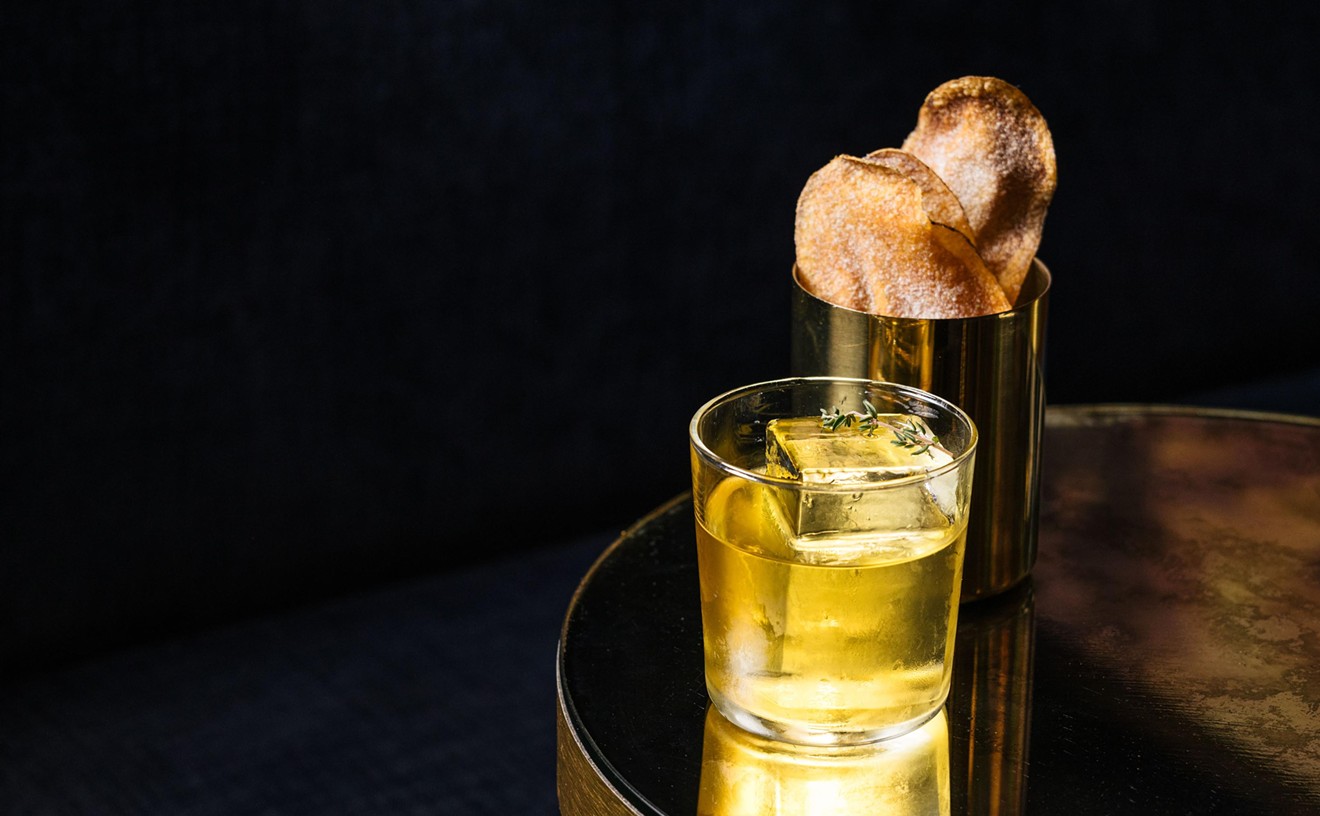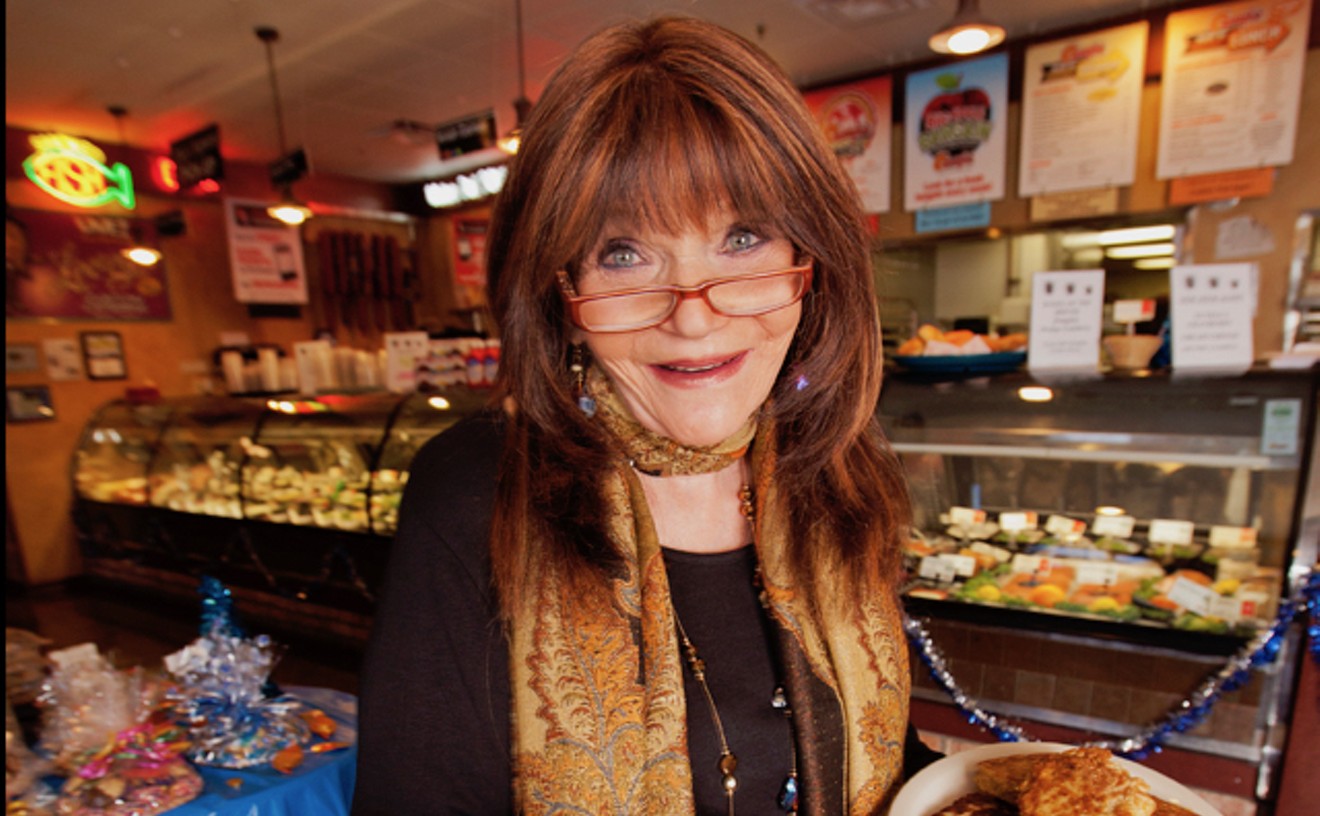On its own, the word mixology just feels pretentious. I get it. The image it evokes is of some bearded, bow-tied hipster bartender turning his nose up while shaking your $15 drink that's basically an Old Fashioned with some berries and a weird savory component. In fact, I don't think I've met one mixologist in town who wouldn't more readily describe him or herself as a bartender. People who insist on the title generally don't deserve it.
So let's just drop the word for now and focus on the craft cocktail movement as a whole, which hopefully merits a few less eye rolls in your book.
See also: Governor Brewer Approved SB 1397, the "Liquor Omnibus" Bill; Here's Why It Matters To You
It might be best to look at the issue in the scope of two of Arizona's most prominent bartenders: Jason Asher and Micah Olson. The two men crossed paths at Jade Bar at a time where New York and L.A. had thriving cocktail movements and Phoenix was still lagging behind. The two ran a cocktail consulting company in town called AZ Mixology, and, in 2010, Asher made the cover of GQ magazine after winning the Bombay Sapphire Most Inspired Bartender competition.
"Bartenders decided to run first. They were making cocktails because they were mixologists," Asher explains. "People began putting a lot of ingredients in drinks thinking it would add complexity, but they didn't allow the fundamentals of making drinks... to bring complexity"
Since then, you likely have tried Olson's top-notch creations at Crudo, which he co-owns. You've also probably tried Asher's drinks, though you might not know them as such since he works as a cocktail consultant for Young's Market Company. The liquor distributor is responsible for 85% of craft liquor sales in the state and I've heard from proprietors that Asher's cocktails are definitely a contributing factor to their success in the market.
In the last 12 months, Young's has seen craft liquor cases sold at a 71% increase in bars, hotels, and restaurants. Since January of 2012, craft liquor's overall growth for the company is closer to 88% with a 53% growth in overall revenue.
That meteoric growth in just the category of spirits designated as craft can tell you a few things--craft spirits aren't going anywhere anytime soon and, if this is a fad, it's one that's making money for restaurateurs.
"I keep feeling more and more restaurants that are going to focus on their cocktail program," Olson says. "It's such a money-maker. It's definitely spurring our business and I get calls every week asking for help from other people just starting."
"It's on it's way to becoming a very important part of a food and beverage program," Asher adds. "Chefs that want to take their restaurants to the next level and maybe get that James Beard award will need to ensure everything, from the lighting to the cocktail program, is perfect."
In the category, Young's biggest trend leader is the local Arizona Distilling Company, which the company solely distributes. After that, a handful of whiskey brands, such as Templeton Rye, Buffalo Trace, and Four Roses, lead the pack. More surprisingly, the fifth brand that's selling well for Young's is St. George, a craft distiller out of California known primarily for its gin.
"The biggest thing I've noticed is there's less resistance now from guests than there was before," Olson says. "You used to have to push a gin drink on people, but now people are asking for something different. People are more aware and adventurous than they were seven or eight years ago."
Back in 2007 at Jade Bar, Olson and Asher, under consulting barman Ryan Magarian, used fresh juice, housemade bitters, herbs grown on site, and craft liquors to distinguish their program. Those elements of craft cocktails have not just survived, but are ever-present hallmarks of a good cocktail program in town and around the world. Like we've all seen with food, the craft cocktail movement's insistence on fresh, local, organic, and artisan ingredients might speak more to the changing eating habits of Americans than just a kitschy fad.
"It all goes hand in hand with culinary movement," Asher explains. "Chefs reached behind the bar to incorporate interesting amaros and vermouths in their recipes and bartenders, in turn, went into the kitchen to find ingredients to incorporate into their drinks. Now, it's at a point nationally that I feel it's overshadowing chefs in the culinary world."
Whether or not that's the case, it is obvious that cocktails are huge right now. With countless new books and magazines being printed on the topic, the scene is getting a lot of exposure. Both men attribute that exposure as one of the reasons people might think the movement, as they see it, is just a passing trend.
"A trend is different than a movement," Asher says. "What you're seeing now is beyond a trend. White whiskey is a moment. Mixology, that term, is a fad. At the end of the day, we're just bartenders."
While Asher and Olson both point to things like carbonated cocktails as fads within the movement, overall, bartending as a respectable job is coming back and "garden to glass" cocktails, as Olson puts it, are here to stay.
"We finally got back to it craft and I don't see it ever going back to the mentality of canning everything and making everything in the factory," Olson says. "People are too smart for that and people don't like those sweet, syrupy drinks anymore."
While Asher sees a number of factors currently holding the Valley's cocktail scene back, including Phoenix's walkability issues and talent moving to other more established scenes, he insists that by next year our beverage scene will be getting major recognition.
Almost too obviously hinting, Asher speaks of someone changing the scene in town and his dream of opening up a spot in his hometown with someone "like Micah." All gossip aside, programs like Stephanie Teslar's at Blue Hound, Travis Nass' at Last Drop, Joshua James' at Clever Koi, and, of course, Micah Olson's are still gems in a cocktail scene that's as ignored as it is up-and-coming.
"I think Arizona is close," Olson says.
If you aren't on the cocktail bandwagon already, now is the ideal time to jump on board. As Jason Asher puts it, "If you don't like it, it's about to become very in your face," even citing his recent work with Applebee's on a craft menu.
"At what point do you think a fad becomes a reality? We've been doing this since 2007. Does it take 20 years to prove to somebody that this isn't going to go away?" Asher asks.
Well, what do you think?











